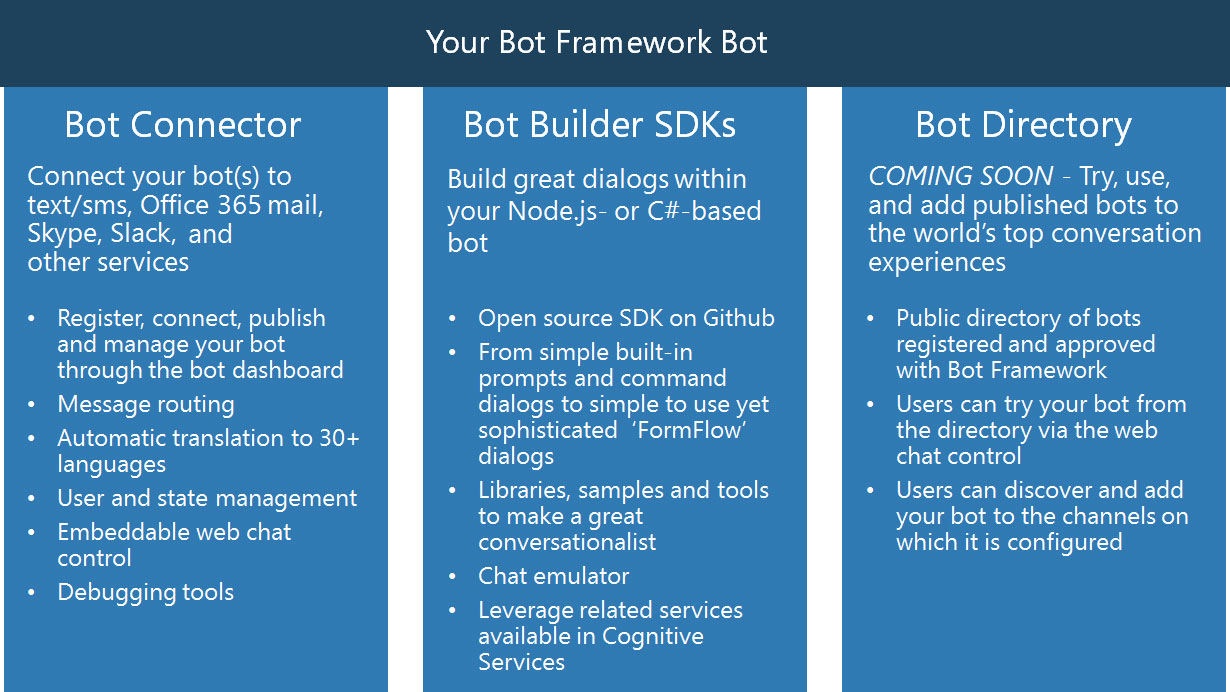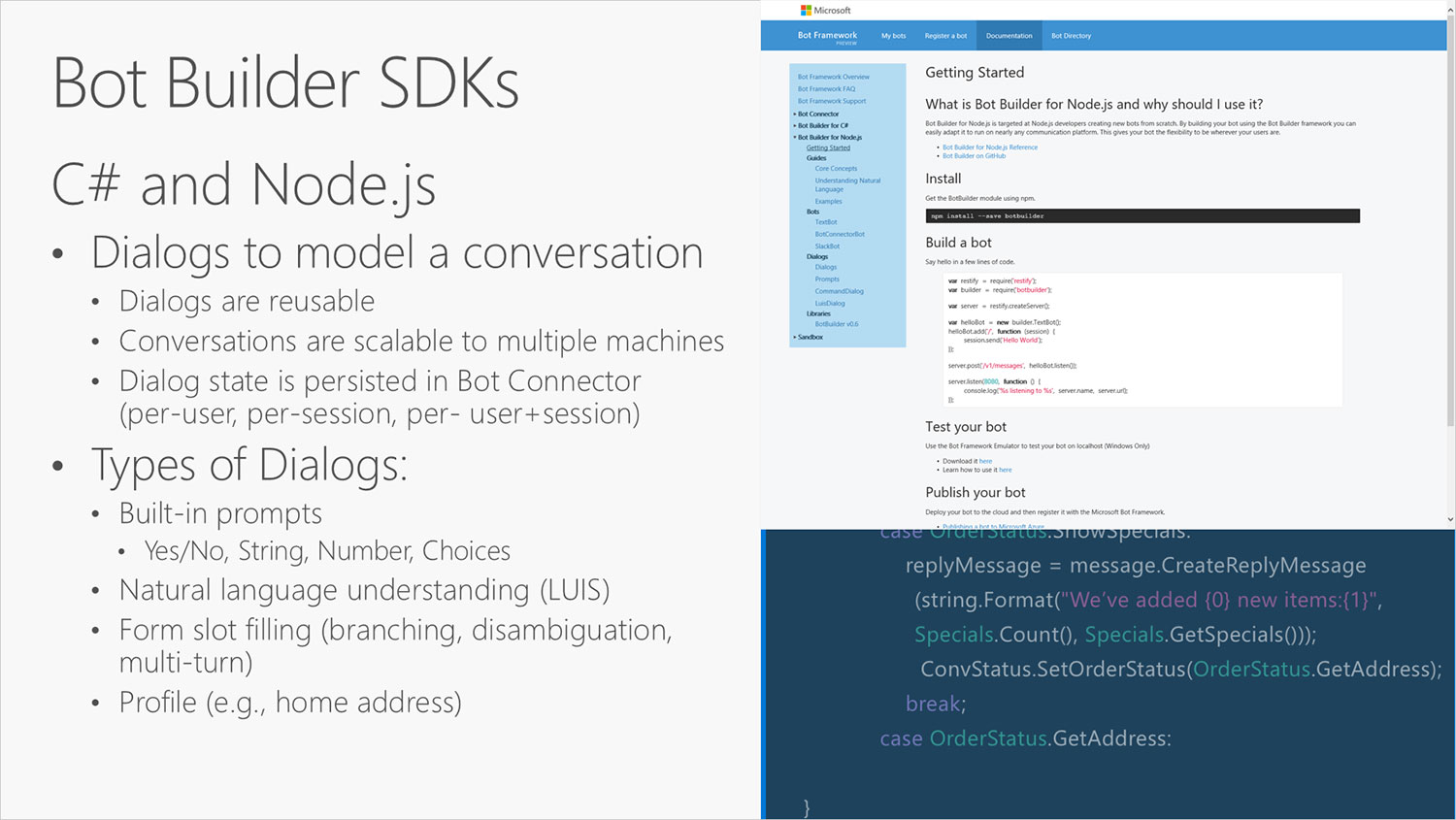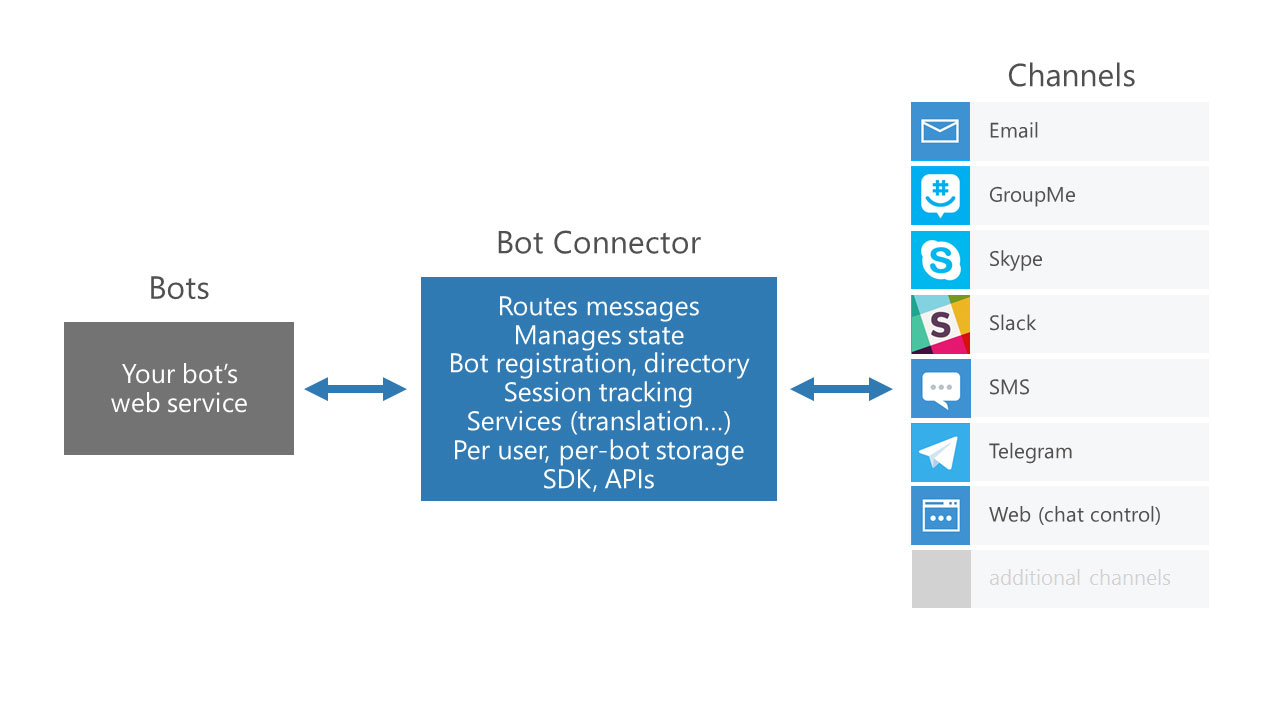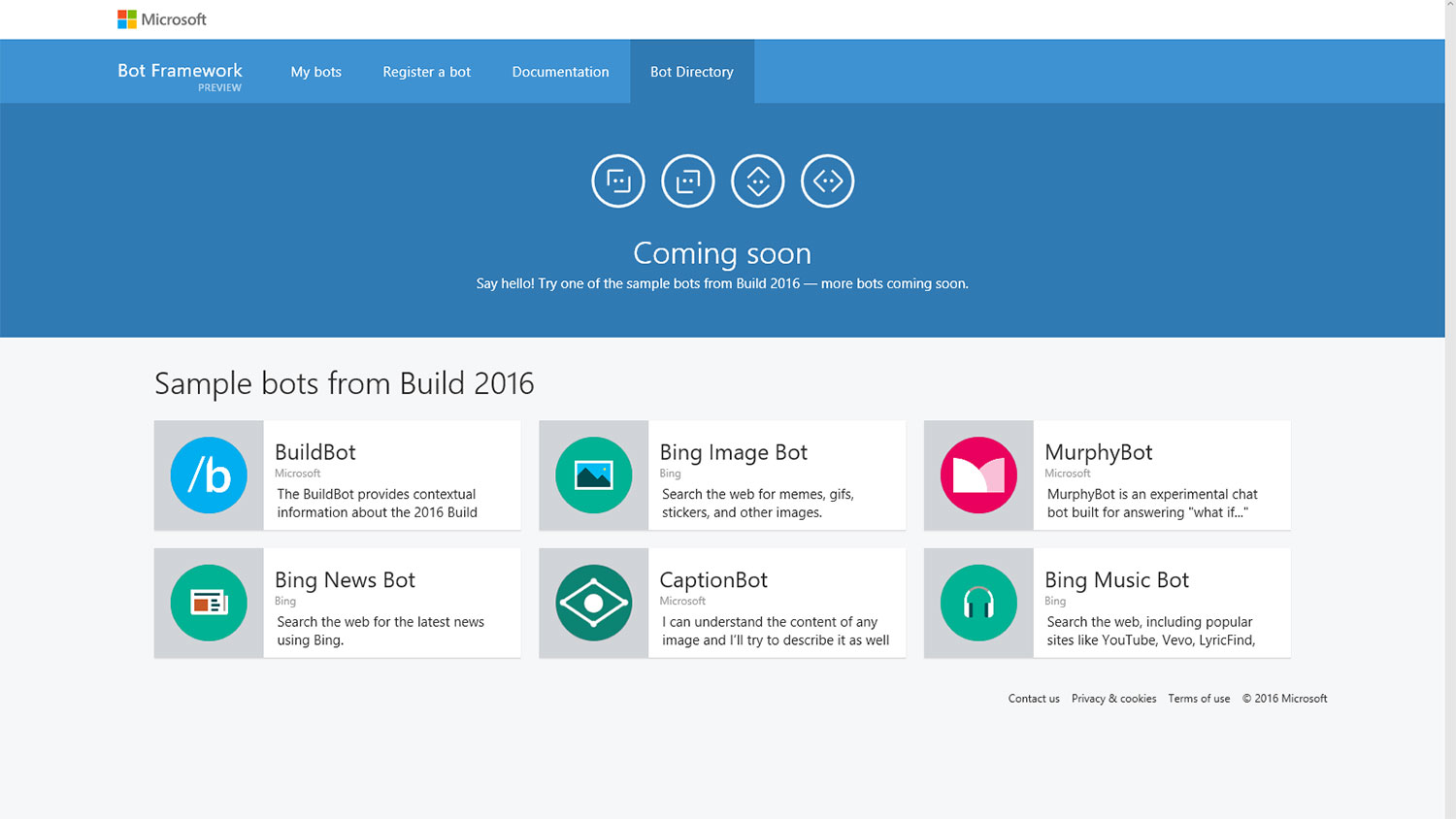
And I do mean everywhere. Microsoft envisions a world full of bots – so full, that you may end up interacting with them more often that you do real human beings. That future isn’t here quite yet, but Redmond’s engineers are laying the groundwork, and the company’s plan sounds like the outline for a new episode of Black Mirror.
The bot as the first line of defense
Microsoft’s Bot Framework was the big surprise of BUILD 2016. Or wasn’t. The company found itself in hot water before the show thanks to a bot, Tay.ai, which was supposed tweet witty banter with millennials, but was instead taught to be a horrible monster by trolls. Microsoft had to apologize, and that seemed then end of that.
Look beyond its suggestibility, however, and Tay.ai is intriguing. The bot was pretty decent at engaging in witty banter, and remarkably good at understanding the context of tweets sent to it. Perhaps too good. Thus, its trouble.
A more mundane bot, demonstrated at the BUILD keynote, showed the practical side of what Microsoft is going for. Instead of serving sick burns, it serves Domino’s pizza. Want a large Hawaiian, extra pineapple, with an order of breadsticks? Don’t call. Don’t use Domino’s online ordering system. Just fire up the bot and tell it what you want.
That may not seem the kind of technology that changes the world. But think about it. How many mundane interactions do you undertake every day? Ordering clothes, buying a drink, making a dental appointment – these tasks are routine, but require some degree of human interaction. No more. Not in Microsoft’s bot future. All this will be handled by simple AI programs.
If you’re a real skeptic, you may object by pointing out that bots aren’t new. They’ve existed for decades, actually. That’s true, but Microsoft isn’t trying to play everyone for fools. The real key is the rollout of its Microsoft Bot Framework, a service and collection of APIs that developers can use while building bots. It gives every developer access to tools, like computer vision, that are normally available only to the largest companies.
That’s the key, and it unlocks a room bursting with bots. If they work as advertised, Microsoft will drastically cut the cost of not just building a bot, but also maintaining it.
A report from Webbmedia Group, published almost exactly a year ago, made the bold claim that up to 50 percent of certain jobs could be replaced by robots over the next 20 years. Technology like the Microsoft Bot Framework is exactly what makes that future possible.
Your friend, the bot
But bots aren’t just destined to put embattled customer service representatives out of work. Some minds at Microsoft envision them having a more omniscient role, in which they’ll become involved even with private conversations.
Derrick Connell, Corporate Vice President of Bing, laid out one potential scenario at a press deep-dive session at BUILD 2016. He envisioned a group text between friends trying to decide where to eat. A bot might join them in the conversation, making suggestions based on everyone’s location and past known preferences. It might even make a reservation once everyone agrees where to go.
Seem farfetched? It’s not. Everything needed to make the scenario possible already exists.
Technology like Microsoft’s Bot Framework will put tomorrow’s customer service rep out of work.
That’s sure to cause privacy concerns, a fact Connell admitted is unexplored territory, saying there “needs to be standards” for how a bot treats data, and how an app or service indicates a bot is listening.
On that issue, Microsoft seems to be drawing a line between bots and Cortana. The company classifies Cortana as an “assistant,” rather than a bot, and privacy might be the most important difference between them.
Bots, as described so far, don’t generally have access to private a person’s private data. They interact, and draw off publically known information, but can’t dip into, say, your email, to try and judge your preferences or when you might be available. Only Cortana can do that.
Conclusion
The future that Microsoft envisions is not innocent, or inconsequential, or without promise. Bot Framework will drastically change the way people interact with computers. It will put people out of work, change how we connect with friends, and literally put anything we desire a request away.
What do you want? Just ask.
Hell, the entire concept of an “interface” may, in fact, start to seem archaic. Who cares about UI design if you can simply tell a computer what you need – and it actually understands?
True, these consequences are still years off. Perhaps decades. As Tay.ai proved, there’s still a lot of work to be done. But Microsoft’s initiative is the first big step towards a future of ever-present AI. This isn’t science fiction. It’s reality. It’s happening right now.
Editors' Recommendations
- Qualcomm claims its laptops destroy Intel chips in AI tasks
- Even Microsoft thinks ChatGPT needs to be regulated — here’s why
- Microsoft will launch ChatGPT 4 with AI videos next week
- I’ve seen the (distant) future of AI web search – here’s where it’s amazing, and where it struggles
- Microsoft invests billions in ChatGPT maker OpenAI






